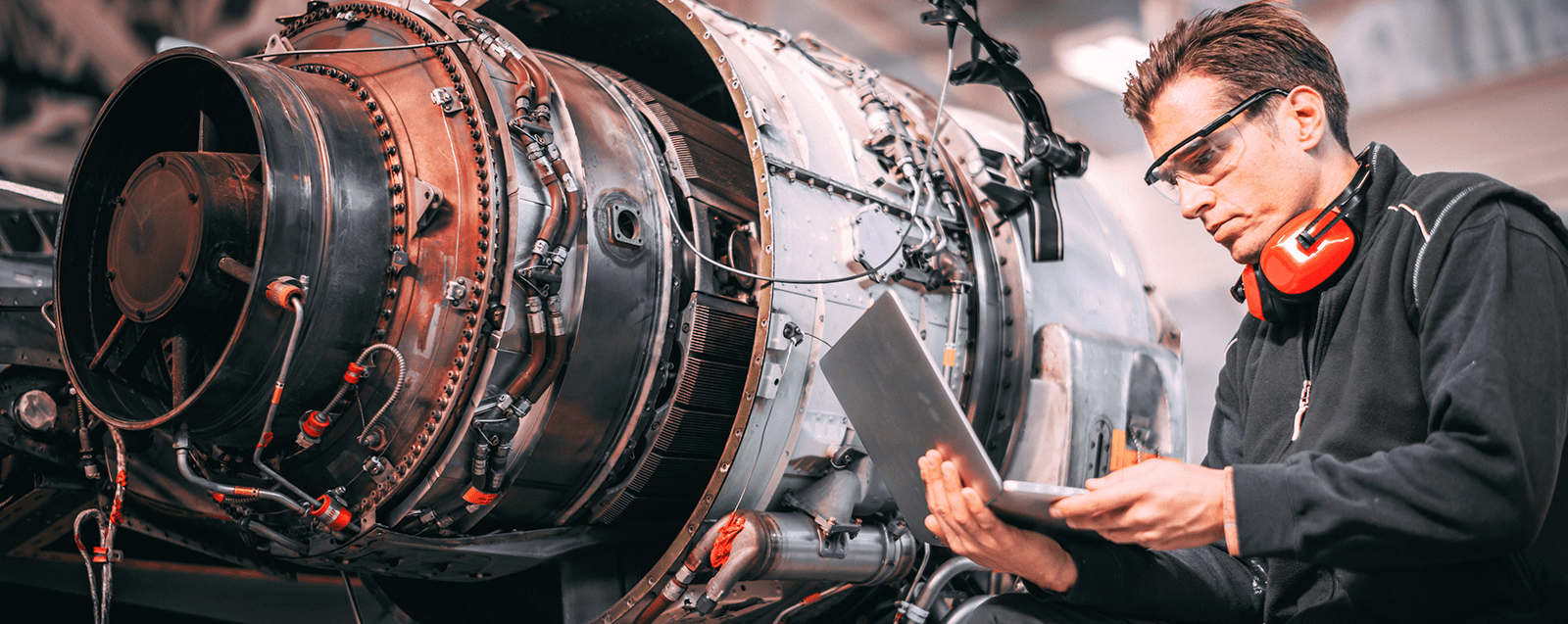Sponsored by:

Aircraft manufacturing demands the highest-quality materials, highly trained experts, rigorous quality control and precision processes that remain largely manual. These demands make it an ideal candidate for a digital reinvention.
Companies can take advantage of recent advances in automation technology and analytics to improve manufacturing speed and accuracy and reduce waste, making manufacturing cells (the groups of machines that work together on a task) more efficient and sustainable. With the expertise of a partner like Hitachi, aircraft manufacturers can combine major leaps in operating technology (OT) with integrated IT for a fully optimized environment.
Challenges abound
A prime example is the installation of nutplates, stamped sheet metal that affixes to a surface. A single-aisle commercial aircraft contains tens of thousands of nutplates. The manual installation of each nutplate takes three to four minutes. This process is repeated thousands of times over the life of the craft as plates are removed and reinstalled for routine maintenance. Until now, nutplate installation has been done manually, exposing manufacturers to risks including:
Human error: Over the course of tens of thousands of manual actions, mistakes are inevitable. The potential for error is compounded by the small size of nutplate components, which make them difficult to handle and increase the potential for mistakes.
Rising costs: Beyond the sheer labor cost of time on the job, the associated errors of manual installation lead to increased costs through scrapped materials, poor inventory management and time-intensive quality control.
Inefficiency: Manual installation often requires down time for changing tools and changing shifts. It also limits visibility across the manufacturing environment, which means that resources are sometimes unavailable or poorly optimized.
To meet today’s demands to become more sustainable and socially accountable, manufacturers must find ways to reduce the waste and inefficiencies inherent in their legacy processes—and the aerospace industry is no exception.

Tremendous potential to transform and automate
To address these challenges, Lumada Manufacturing Insights from Hitachi Vantara merges huge advances in automation at the operational level with superior insights at the informational level for a comprehensive shift toward smarter aerospace manufacturing.
For example, JR Automation’s SmartAttach manufacturing cell fully automates nutplate attachment, taking an error-prone process that took up to four minutes down to 30 seconds. It integrates centering, drilling, lubrication, countersinking, and riveting operations in a single machine and eliminates the need for a large number of the manual alignments, multiple tools, and procedures required by conventional nutplate attachment methods. This kind of automation leads to a host of benefits.
Reduced costs and overhead: Time savings per attachment alone translates to dramatic cost savings in wages and hours, but that’s just the tip of the iceberg. Automation reduces scrapped parts and the associated costs that result from human error, and it eliminates costs associated with hiring, training and coverage gaps for vacations and illness.
Standardized process: Predictable, repeatable processes dramatically increase the quality and consistency of nutplate installation. They also translate to a safer and more sustainable manufacturing environment.
Opportunity gains: Automation frees your most talented people for more valuable activity, which can become a revenue-driver.
The automation built into the SmartAttach cell gives these resource-intensive processes a chance to become not only more cost-efficient for the company but also more sustainable.
The analytics advantage
Automating nutplate installation has clear benefits, but the SmartAttach cell is only one part of aerospace’s reimagined digital manufacturing ecosystem. The key to modernizing the industry lies in integrating operational automation with existing IT systems through the Internet of Things (IoT) and technologies such as the Lumada Manufacturing Insights suite to generate more actionable business data.
By linking automation data with organizational systems, Lumada Manufacturing Insights contributes to a smarter, more profitable and sustainable environment across production, operations and supply chains in a number of important ways.
Comprehensive solutions: Lumada Manufacturing Insights is built to fully integrate with existing business systems like enterprise resource planning and manufacturing execution systems, so data is delivered seamlessly across the organization. This increases the speed-to-insight for the entire business simultaneously, not piecemeal. This seamless integration is also supported by automatic regular updates and the Hitachi team.
Optimized environment: IoT capability across business systems generates detailed reporting around critical goals, provides anomaly detection to anticipate challenges and predict maintenance, and updates machine parameters for precision quality control.
Greater visibility: Better oversight of the environment means you can foresee end-of-life for tools, compare data across shifts or manufacturing locations, and reduce costs while increasing speed through enhanced inventory control.
Scalability to meet changing needs: Lumada Manufacturing Insights’ modular approach allows manufacturers to begin benefitting from smart automation right away at their current maturity level; as business grows, capability can be added without disruption.
The Hitachi difference
The aerospace industry has a tremendous impact on humanity through safe, high-speed travel; essential defenses; and the pursuit of scientific inquiry and its associated innovations.
Hitachi’s commitment to powering good means that it’s our responsibility to improve aerospace and increase the positive impact it has on the world. As a sponsor of this year’s UN Climate Change Conference (COP26), they take that responsibility seriously, and that’s why their solutions don’t stop at automation. Reducing tedious manual process is only the first step. By automating nutplate installation and leveraging the transformative capabilities of Lumada Manufacturing Insights, Hitachi helps aircraft manufacturers dedicate valuable resources to their most important purpose—making all of our lives better.
